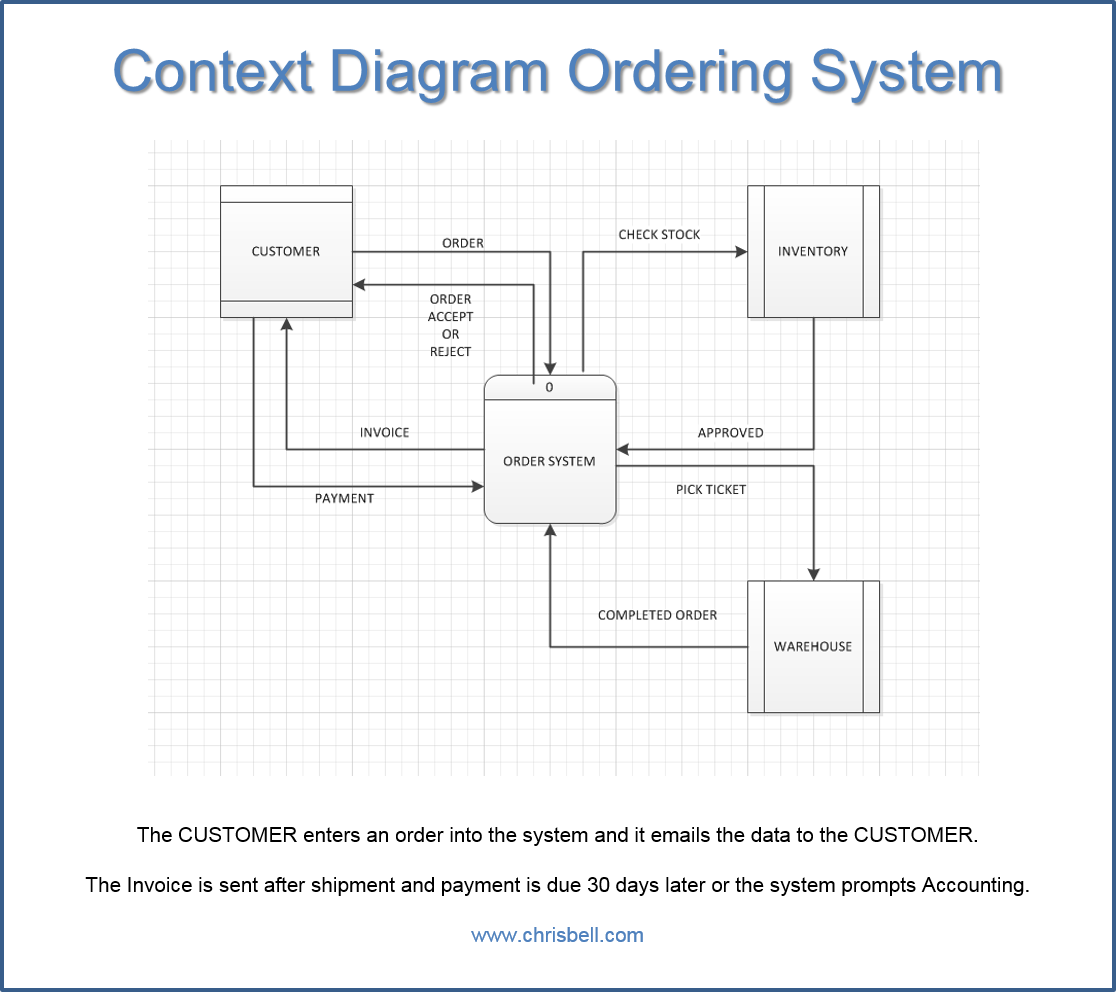 |
Chris Bell | 'A business that makes nothing but money is a poor business.' |
| - Henry Ford |
 |
Chris Bell | 'A business that makes nothing but money is a poor business.' |
| - Henry Ford |
SNHU - IT-510 Advanced Information Technology
Written by: Chris Bell - March, 2015
This context diagram is read clockwise starting from the top left. The order is placed and it needs to be verified that it's in stock. Then the order is sent to the warehouse to pick and ship. Once the order is shipped there's an invoice generated to the customer that will remain open until paid. Deeper rules can be made in the INVOICE table such as, prompt ACCOUNTING when the invoice is passed 30 days and/or prompt the CUSTOMER when the INVOICE is past 30 days.

This is a standard ordering system that you'll see in many stores and they are all similar in many ways. When customers place orders the computer must make sure inventory is available before it allows the process to complete. The computer system must also create confirmations based on a previously generated template and some information pulled from the customer profile and inventory table. More sophisticated systems can track inventory in multiple locations and ship the product from the warehouse that is closest to the home. They also have events that create a new purchase order when inventory reaches a certain level. For instance, "Order 1000 parts when the inventory reaches 10 parts." Programmers can ultimately create any event within a system that you can speak in plain English.